A Look at Neptune's Magnetosphere
The magnetosphere of Neptune is a lot like that of Uranus, medium sized but still much larger than the Earth's. It is large enough to hold all the moons.
Like Uranus, is probably made in the middle and with ice, rather than with iron at the center.
Like Uranus, the magnetosphere of Neptune has an extreme tilt, almost 60 degrees. Because Neptune itself is not tilted however, the magnetosphere of Neptune has more normal parts.
Like Saturn, Neptune's magnetosphere produces aurora but very faint ones, as well as radio signals such as whistler waves, chorus and hiss.
 "What is a Magnetosphere?"
"What is a Magnetosphere?"
 How We Measure Magnetism
How We Measure Magnetism
 The Poles of Neptune
The Poles of Neptune
You might also be interested in:
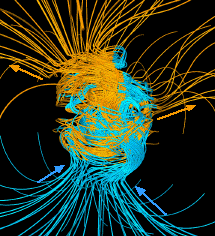
Magnetospheres are generated with 1.) magnetic materials and 2.) with movement of the magnetic material. The Earth-like planets generate magnetospheres within the iron cores at their centers. However,
...more
Motions in the interior of a planet help to move heat from the inside to the outside. The drawing shows a kind of movement that is usual in the atmosphere as well as the inside of a planet. Material moves
...more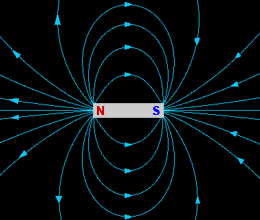
Have you ever seen a bar magnet? Bar magnets have two magnetic poles - north and south. The magnetic field around a bar magnet is called a dipole magnetic field. "Dipole" means "two poles". Bar magnets
...more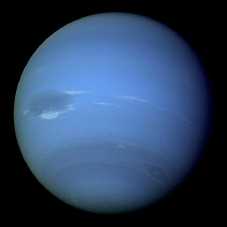
Neptune was discovered in 1846. But it wasn't discovered using a telescope. Scientists used math instead! They watched Uranus and saw that its orbit was doing weird things. They knew another planet had
...more
Neptune's atmosphere shows a striped pattern of clouds, just like that of Jupiter and Saturn. Neptune even has a Great Dark Spot similar to the Great Red Spot of Jupiter. The history of Neptune's atmosphere
...more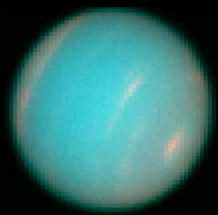
This image shows the new Great Dark Spot of Neptune, which was discovered using the Hubble Space Telescope. The image shown here, shows a large "hole" in the clouds of Neptune in pink, in the northern
...more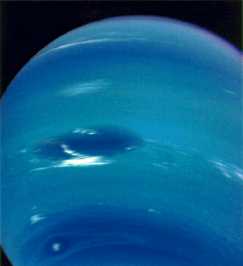
The giant planets have definitely changed since their formation. But how much remains to be seen. Most of the original air of the giant planets remains in place. (The earth-like planets lost most of their
...more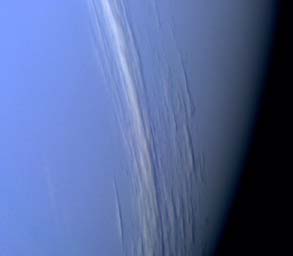
This image shows some clouds known as "cirrus" clouds, extending for many kilometers across the face of Neptune. These clouds are very high up, for they can be seen to cast shadows on the lower clouds,
...more














